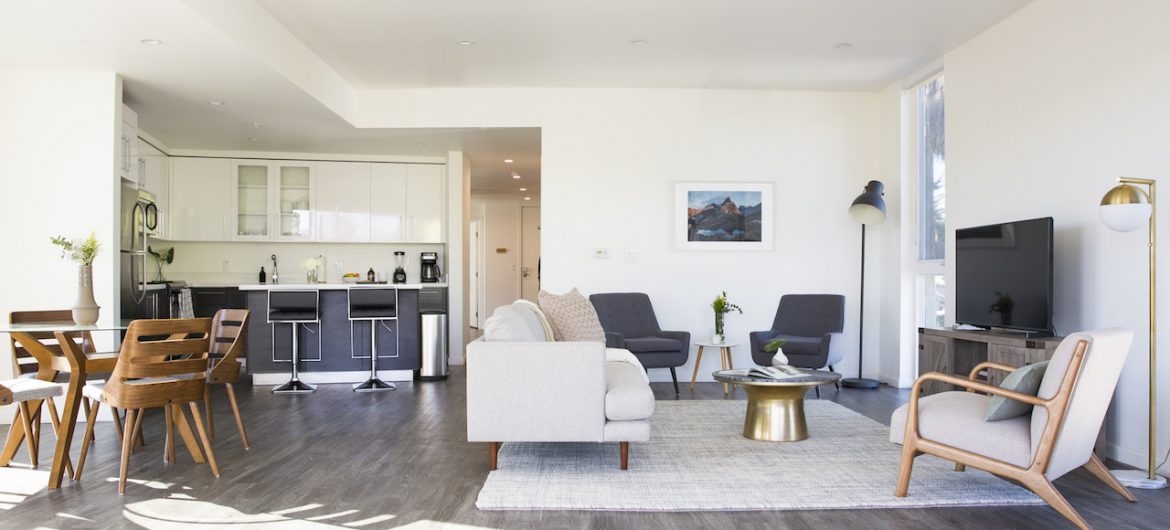One of the primary selling points of co-living spaces is that they typically feature cheaper rents than traditional homes. Purchasing a home is beyond the reach of many members of the younger generations, as housing costs have begun to greatly outpace wages.
Startups that specialize in co-living spaces have begun to sprout up, such as Ollie and Common, each suggesting that they offer a solution to the affordable housing crisis. Is this true? Have co-living spaces cracked the code of affordable housing?
First of all, these spaces are often more expensive, per square foot, than traditional rentals. Because more areas are shared, property owners are making more money per square foot than the money typically earned via traditional housing. So it’s easy to see why property owners on board. What about renters?
Well, the tradeoff for renters is that, yes, they are paying more per square foot but, due to the fact that areas are shared by others, they are paying for less square feet, often just a bed in a room and access to common areas. Let’s take a look at some statistics.
At Common’s Williamsburg Brooklyn location, a private bedroom in a suite with a shared bathroom and other roommates starts at $2,130, whereas the median price for a full one-bedroom apartment in Williamsburg is $2,840. That’s a fairly stark difference, but the latter figure is for a one bedroom apartment. Shared apartments, with multiple roommates, will be much cheaper and more in line with Common’s cost estimate.
Common obviously believes in their mission. They’ve teamed up with L&M Development to build a large space in East Harlem that is intended for use by low- and moderate-income New Yorkers. This project is one of three pilot programs started by the New York City Department of Housing Preservation and Development as an attempt by the city to create more affordable housing. The space will feature over 250 units, some more private and some more open, as reported by Curbed New York.
There’s also the Atlanta-based PadSplit, a co-living platform that emphasizes affordability. PadSplit offers an Airbnb-like service that specializes in splitting and repurposing bedrooms in existing single-family homes. These spaces typically feature affordable rent, anywhere between $435 and $650 a month in the Atlanta area, which includes cable, Wi-Fi, utilities, and laundry, among other amenities. As a reference point, average rent in Atlanta is $1,477 per month, though this refers to a one bedroom apartment. Even if you half that figure, to account for a typical roommate share situation, it is still more expensive than what PadSplit offers.
The company has announced plans to move into low income neighborhoods in New York City, including a partnership with Cypress Hills Local Development Corporation and the NYC HPD to create 11 housing opportunities in a two-story, legal single-room occupancy building. These spaces will likely be affordable, compared to the average NYC rental price.
It looks like PadSplit is on the right path, adding a value component to the co-living space. There are, however, some drawbacks. PadSplit doesn’t offer leases, for one, and tenants can be evicted with no notice given, among other legal obstacles.
“It’s kind of a market solution, I guess, for the affordable housing crisis, to get one room, on a week-to-week basis, that really could be yanked out from under you at any time,” Georgia State University professor Dan Immergluck said. “It’s a logical market response to a desperate need among single, low-income people. It’s designed for people earning $10 to $12 per hour.”
Some have also accused these startups of simply offering a modern take on the single room occupancy hotels, or SROs, of the early 20th century. Otherwise known as flophouses, these were low cost, often dangerous, living situations that were considered a last resort for those newly relocated to large urban centers. This comparison has been issued toward the co-living startup Starcity, which is in the midst of creating an 18-story building with 803 units in the heart of downtown San Jose, California. This will be the biggest co-living space ever conceived, and detractors have suggested that that the population density of the space will be more in line with an SRO, attracting the same type of transient element.
There are some differences, however, between modern co-living spaces and SROs.
“95 percent of the usable square footage in an SRO is renters’ rooms, with the remaining five percent mostly hallways,” Curbed San Francisco wrote. “By comparison, a Starcity building is about 65 percent bedrooms, and 20 percent of the building is dedicated to ‘communal spaces and kitchens.'”
Additionally, modern co-living buildings differ from SROs when it comes to the length of time tenants typically stay. Tenants are known for living week-to-week in an SRO, whereas more than 70 percent of tenants at a co-living facility stay for months at a time, according to Starcity CEO Jon Dishotsky.
So, it comes back down to price. In one hypothetical model posited by NYU’s Furman Center, a developer would have to lease a small studio for $1,480 a month to be profitable, which is an affordable rent for someone making about $59,200 a year. In the same circumstances, a co-living unit, in which the tenant shares a common kitchen and bathroom, could offer a room for $840 a month, affordable to someone making $33,600 a year. These numbers are in line with traditional roommate shares throughout New York City.
As you can see, the jury is still out. While co-living spaces are indeed cheaper than renting a one bedroom apartment in expensive urban areas, there isn’t much evidence to support them as an affordable alternative to traditional roommate share situations. Though co-living spaces do offer flexibility and convenience, which traditional roommate shares do not.
photo credit: common





